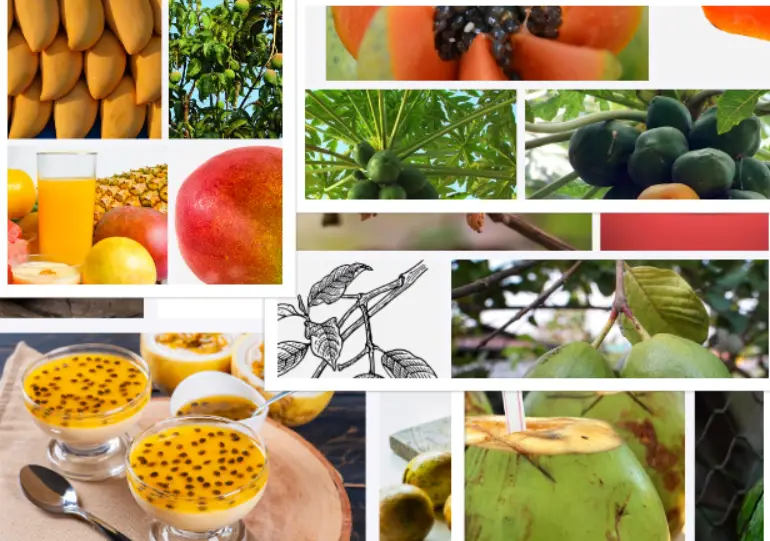What is Hawaii known for agriculture? | What vegetable is Hawaii known for?

- By
- Aparna Patel
- |
- 22 Mar, 2023
- |

Hawaii is known for its lush vegetation and ideal climate for agriculture. From its iconic pineapples to its world-renowned coffee, Hawaii has a rich agricultural history and is known for producing a variety of crops.
Among these crops, there is one vegetable that stands out in Hawaiian cuisine and culture: taro.
Taro has been a staple in Hawaiian cuisine for centuries, and it is deeply rooted in the traditions and beliefs of the islands. This starchy root vegetable is used to make traditional Hawaiian dishes like poi, taro chips, and taro bread.
In addition to taro, Hawaii is known for producing a variety of other crops, including pineapple, sugar cane, coffee, macadamia nuts, and tropical fruits like papaya and mango. These crops are not only important to Hawaii’s economy, but they are also deeply ingrained in the cultural identity of the islands.
In this blog post, we will explore Hawaii’s rich agricultural history and the crops that have made the islands famous. We will delve into the cultural significance of taro and its uses in Hawaiian cuisine, as well as the other crops that Hawaii is known for producing.
So join us as we discover what makes Hawaii’s agriculture unique and why the islands are truly a food lover’s paradise.
Hawaii has a rich agricultural history and is known for producing a variety of crops due to its tropical climate and fertile soil. Here are some of the top crops that Hawaii is known for:
- Pineapple: Hawaii is famous for its sweet and juicy pineapples, which were once a major export crop. Although pineapple production has declined in recent years due to competition from other countries, it is still an important part of the islands’ agricultural heritage.

- Sugar cane: For much of Hawaii’s history, sugar cane was the dominant crop, with large plantations covering much of the islands. Although the industry has declined in recent years, sugar cane is still grown on a smaller scale.

- Coffee: Hawaii is known for its high-quality coffee, which is grown on the slopes of the islands’ volcanic mountains. The unique soil and climate conditions make Hawaii-grown coffee highly sought after by coffee connoisseurs.

- Macadamia nuts: Hawaii is the largest producer of macadamia nuts in the world, with the nuts prized for their rich, buttery flavor and high nutritional value.

- Taro: Taro is a root vegetable that has been a staple in Hawaiian cuisine for centuries. The starchy vegetable is used to make poi, a traditional Hawaiian dish, as well as other dishes like taro chips and taro bread.

- Tropical fruits: In addition to its major crops, Hawaii is also known for producing a variety of tropical fruits, including papaya, mango, guava, and passion fruit.

Overall, Hawaii’s rich agricultural history and diverse array of crops make it a unique and important player in the global agricultural industry.
What vegetable is Hawaii known for?
Taro is the vegetable that Hawaii is most commonly known for. Taro has been a staple in Hawaiian cuisine for centuries and is deeply rooted in the culture and traditions of the islands. It is a starchy root vegetable that is similar in texture to a potato, but with a slightly nutty flavor.
Taro is used to make a variety of dishes in Hawaii, including poi, which is made by pounding the cooked taro root into a paste. Poi is a traditional Hawaiian food that has been a dietary staple in the islands for generations. Taro is also used to make taro chips, taro bread, and other dishes.
In addition to its culinary uses, taro is also important in Hawaiian culture and mythology. It is believed to be the sacred food of the Hawaiian gods, and is associated with prosperity and good fortune. Today, taro is still grown in Hawaii and is an important part of the islands’ agricultural heritage.
Read more
- What is Hawaii known for?
- What fruit is Florida known for? | Local & Delicious Florida Fruits
- What fruit trees are native to Florida?
- What is California known for fruit?
- What is California known for agriculture?| What vegetable is California known for?
- Why are redwood trees so big?| How tall are redwood trees?
- What is Redwood National Park famous for?
- What city are the redwoods in California?
- Why do redwoods only grow in California?
Hawaii’s agriculture industry has been a significant contributor to the state’s economy for many years. While tourism is the primary industry in Hawaii, agriculture still plays a vital role in supporting local communities and providing employment opportunities.
The agriculture industry in Hawaii consists of various crops, including coffee, macadamia nuts, pineapples, and tropical fruits such as papayas and avocados. The state’s unique climate and fertile volcanic soil make it an ideal location for growing these crops.
The agriculture industry provides numerous benefits to Hawaii’s economy, including:
- Job creation: Agriculture provides employment opportunities for local communities, with an estimated 40,000 jobs generated in the industry. This includes jobs in farming, processing, packaging, and transportation.
- Export revenue: Hawaii’s agricultural products are in high demand, both locally and internationally. The state exports its agricultural products to countries such as Japan, Canada, and South Korea, generating significant export revenue for the state.
- Local food production: Agriculture plays a crucial role in producing fresh and locally sourced food for Hawaii’s residents. This supports the local food movement, reduces the state’s reliance on imported food, and supports local farmers.
- Sustainable farming practices: Many farmers in Hawaii are committed to sustainable farming practices that protect the environment and preserve natural resources. This includes using organic farming methods, minimizing the use of pesticides and fertilizers, and implementing water conservation techniques.
- Cultural significance: Agriculture is deeply rooted in Hawaii’s culture and history. Many Hawaiian traditions and practices revolve around farming, such as the ancient Hawaiian farming system of ahupua’a.
In conclusion, Hawaii’s agriculture industry continues to be a significant contributor to the state’s economy, providing employment opportunities, generating export revenue, supporting local food production, promoting sustainable farming practices, and preserving Hawaiian culture and history.
Search Posts
Latest posts
-
5 Mar, 2024
How to avoid drinking vodka?
-
4 Mar, 2024
How to make dining alone less awkward?